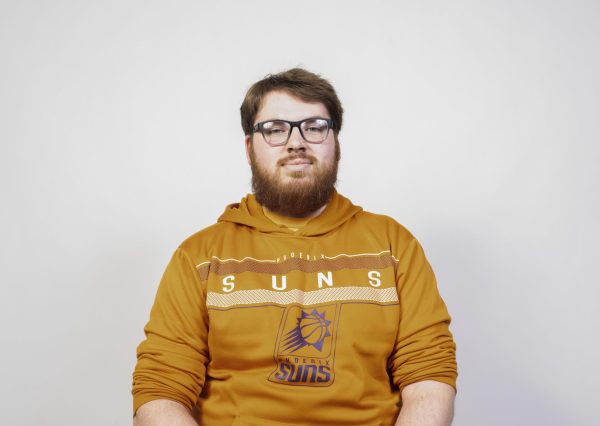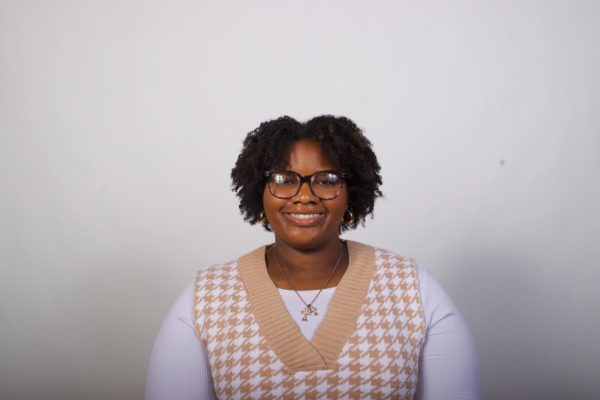Marketing the rainbow can be dangerous
June 9, 2019
Pride month has begun, and with comes a time of reflection, remembrance, shared experiences and shameless cash grabs from companies like Oreos to Smirnoff.
The first Pride parade took place on June 27, 1970, organized by the Chicago Gay Liberation movement; in the days following, several more cities would also see LGBTQ organizations taking a stand.
These parades took place a year following the events of the Stonewall Inn Riots, which acted as a catalyst and turning point in the ways LGBTQ individuals reacted to the oppression, began to speak out and fight back.
It’s important to remember that this wasn’t some far off time ago; many people that were directly affected by this are still alive today.
The Marriage Equality Act was passed in July of 2015, and before this, while ads and marketing that targeted LGBTQ individuals were not unheard of, it wasn’t as mainstream as it is today.
While corporatizing queer culture and turning the rainbow into an icon is not as bad as criminalization, it still waters down and takes away from the message of what Pride truly stands for.
One of the most worrisome examples of merchandising the rainbow and targeting queer groups is that of alcohol companies.
A study conducted by the Centers for Disease Control and Prevention found that lesbian, gay or bisexual individuals were much more likely to participate in binge drinking.
Individuals who identified as heterosexual had roughly a 22 percent chance of participating in binge drinking in the last year; meanwhile, lesbian and gay individuals had a 33 percent chance, and bisexuals had a 39 percent chance, according to the CDC.
Alcohol abuse is 2 to 5 times more prevalent in LGBTQ individuals as opposed to those who identify as heterosexual and cisgender, according to the National Institute on Drug Abuse.
The reasons for substance abuse within the LGBTQ community aren’t difficult to find. People often live with more stressors, fear of harassment, social stigma and a plethora of other factors that can contribute to mental illness or turning toward substance abuse.
Companies like Smirnoff, Svedka, Bud Light and Absolut strategically market for LGBTQ individuals; these companies often have booths at Pride festivals or floats in one or more parades.
This targeted marketing just leaves a sour taste in the mouth. The LGBTQ community is more likely to suffer from substance abuse, and yet so much of its culture exists in bars, and the marketing is targeted directly at the community.
Dry (sober) Pride events have begun to pop up in major cities because of this and exist for individuals in recovery or those simply looking for a night out without the booze.
Another example of this corporatization is that of the Disney Pride collection. That’s right—the company that used a 15-second scene from the live-action remake of “Beauty and the Beast” featuring background character LeFou to create a media frenzy surrounding the “inclusiveness” of the film.
Lefou was one of the first openly gay characters to be shown on the Disney big screen, but the portrayal left much to the imagination in that he dances with a fellow male background character in the last shots of the film.
A blink-and-you’ll-miss-it scene with a background character is far from quality representation; it is an Easter-egg that homophobes got angry with.
And yet, Disney slapped a rainbow on some Mickey ears and is charging $20 for a hat—the only solace is that they are donating 10 percent of the proceeds to the Gay, Lesbian & Straight Education Network, an organization that helps LGBTQ students; however, that still leaves Disney to pocket 90 percent of the profit for simply targeting the LGBTQ and ally market.
Ariana Grande and the Manchester Pride organizers caught some flack earlier in the year when they booked the performer for the event as it caused prices to skyrocket to nearly 70 euros a ticket.
This price bump effectively pushed out many individuals who could’t cover the cost; Pride festival entrance usually runs around $10 to $20.
Chicago Pride, for example, has a $10 entrance fee. The money then goes toward the Center on Halsted to pay performers, security and other expenses.
It’s important to remember that while today, Pride is a celebration of uniqueness, creativity and love, it didn’t start that way.
It started as a riot, and we wouldn’t be where we are today without the work of countless individuals who stuck their necks out so that future LGBTQ generations would not have to live in the same kind of world they did.
Corporations are not human beings, and they cannot truly take a stance or stick their necks out.
They exist to make money. The only reason a company puts a rainbow on anything is because it decided it’s more profitable to be with the LGBTQ community than against it. If the opposite was true, it would do the profitable thing and go against the community.
Zoë Donovan is a junior journalism major. They can be reached at 581–2812 or at [email protected].















































